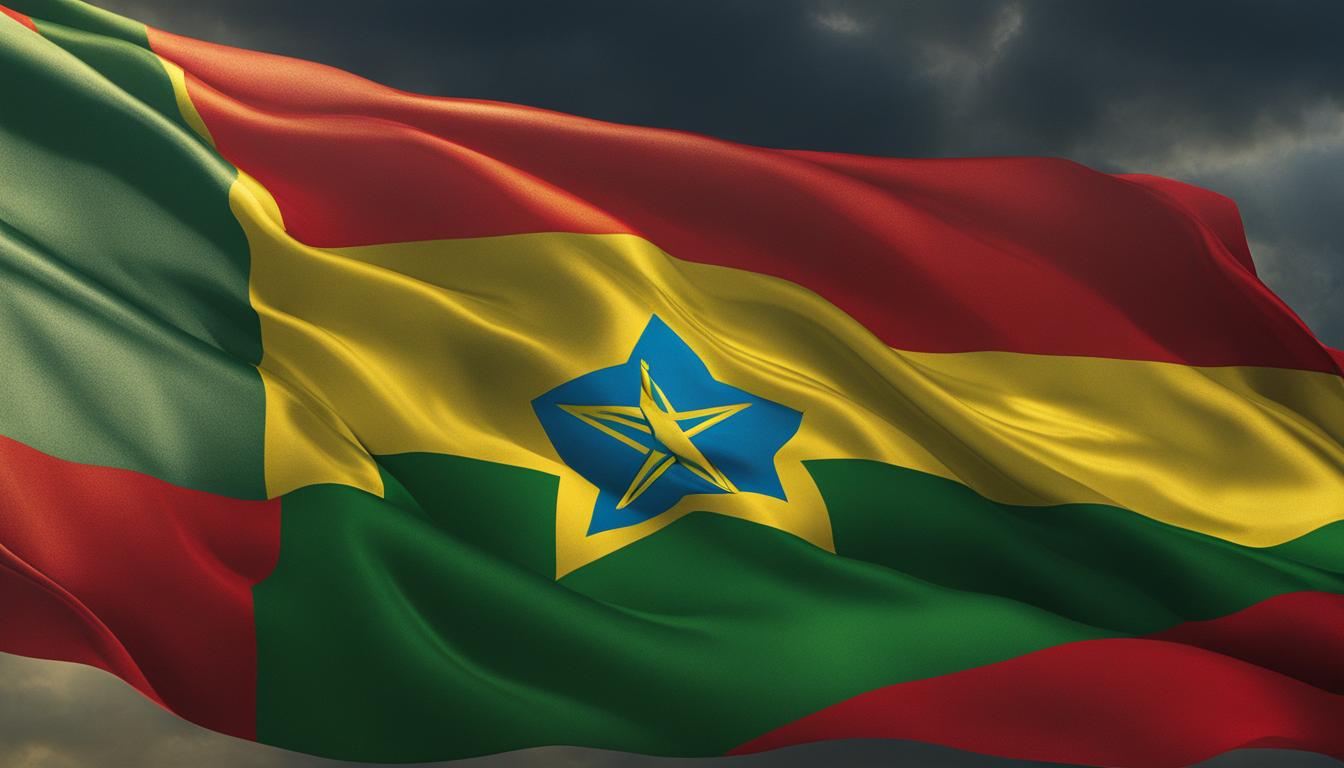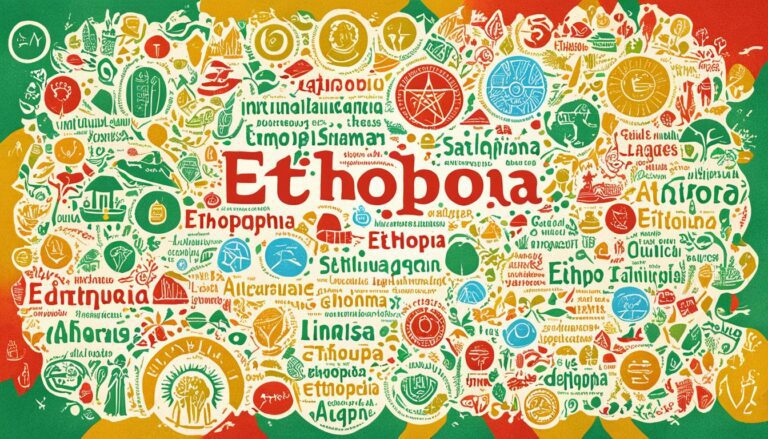How Old Is Ethiopia?
Did you know that Ethiopia is one of the world’s oldest countries, with a history that dates back over 3,000 years? This vibrant nation in the Horn of Africa has seen the rise and fall of ancient kingdoms, witnessed the spread of Christianity, and endured periods of colonial occupation and internal conflicts. Ethiopia’s fascinating past has not only shaped its culture and identity but also contributed to the broader historical tapestry of the world.
Key Takeaways:
- Ethiopia has a rich history that spans over 3,000 years, making it one of the oldest countries in the world.
- The Kingdom of D’mt and the Kingdom of Aksum were early civilizations that laid the foundation for Ethiopia’s cultural and political development.
- The Ethiopian Empire experienced various historical milestones, including the reunification of the country under Emperor Tewodros II.
- Ethiopia faced colonial occupation by Fascist Italy but regained its sovereignty after World War II.
- Today, Ethiopia is a diverse country with a growing economy, but it also grapples with challenges such as poverty and ethnic discrimination.
The Ethiopian Empire: Historical Milestones and Transitions
The Ethiopian Empire, which spanned from 1270 to 1974, underwent significant historical milestones and transitions that shaped the course of Ethiopian history. After the decline of the Aksumite kingdom, the Zagwe dynasty ruled the north-central regions of Ethiopia until Yekuno Amlak led a successful revolt in 1270, marking the beginning of the Ethiopian Empire and the Solomonic dynasty.
Under the Solomonic dynasty, the Ethiopian Empire experienced a period of territorial expansion and increased prestige. However, it also faced challenges that tested its unity and stability. One such challenge was the Ethiopian-Adal War in the 16th century, which resulted in a fragmented period known as Zemene Mesafint.
“Zemene Mesafint”, which translates to “Era of the Princes” in Amharic, was characterized by competing regional princes vying for power and control. This era of decentralization and internal conflict weakened the Ethiopian Empire, leading to a decline in its influence and prosperity.
It was not until the reign of Emperor Tewodros II in the mid-19th century that the Ethiopian Empire began the process of reunification and modernization. Emperor Tewodros II, also known as Theodore II, launched a series of military campaigns to assert central authority and bring an end to Zemene Mesafint. His efforts culminated in the reunification of Ethiopia in 1855.
To visualize the timeline of the Ethiopian Empire and its historical transitions, refer to the table below:
| Time Period | Key Events |
|---|---|
| A.D. 1270 – 16th century | Establishment of the Ethiopian Empire under the Solomonic dynasty |
| 16th century – 1855 | Ethiopian-Adal War and the era of Zemene Mesafint |
| 1855 – 1974 | Reunification and modernization of Ethiopia under Emperor Tewodros II |
The reunification of Ethiopia marked a turning point in its history, setting the stage for future developments and the emergence of the modern Ethiopian state. The Ethiopian Empire’s historical timeline and transitions reflect the resilience and adaptability of the Ethiopian people throughout the centuries.
Stay tuned for the next section, which will delve into Ethiopia’s experience with colonial occupation and its fight for independence.
Ethiopia in the Modern Era: Colonial Occupation and Independence

Ethiopia has experienced significant challenges and changes in the modern era, including colonial occupation and a struggle for independence. In this section, we will explore the occupation and annexation of Ethiopia, the formation of Italian East Africa, the impact of the Ethiopian-Adal War, and the Anglo-Ethiopian Agreement.
In 1936, Ethiopia fell under the occupation of Fascist Italy, marking a dark period of colonial rule. Italian forces annexed Ethiopian territories, including Italian-possessed Eritrea and Somaliland, forming the entity known as Italian East Africa. The occupation resulted in the loss of Ethiopian sovereignty and the establishment of Italian control over the region.
During World War II, Ethiopia saw a glimmer of hope for independence. British military administration took over the country from Italian forces and worked towards restoring Ethiopian sovereignty. In 1944, Ethiopian independence was finally regained, marking a turning point in the country’s history.
However, the challenges did not end there. In the years that followed, the Ethiopian Empire encountered internal conflicts, notably with the rule of the Derg. The Derg was a military junta supported by the Soviet Union that governed Ethiopia from 1974 to 1991. This period was marked by political instability, economic challenges, and human rights abuses.
In 1991, the Derg was dissolved, and Ethiopia transitioned to a federal republic with the adoption of a new constitution. This marked an important step towards democracy and political reform in the country.
Throughout its history, Ethiopia has faced various struggles, including the Ethiopian-Adal War in the 16th century, which had a profound impact on the region. This conflict between Ethiopia and the Adal Sultanate, led by the Somali Sultanate, shaped the geopolitical landscape and influenced Ethiopia’s relationships with neighboring territories.
The Anglo-Ethiopian Agreement played a crucial role in Ethiopia’s fight for independence. The agreement, signed between Emperor Menelik II of Ethiopia and Britain in 1897, solidified Ethiopia’s autonomy and recognition as a sovereign state. It also served as a significant diplomatic achievement for Ethiopia, bolstering its international standing.
The Occupation and Annexation of Ethiopia
Under Fascist Italy, Ethiopia faced a period of colonial occupation that lasted from 1936 to 1944. Italian forces aimed to establish complete control over the country, exploiting its resources and suppressing local resistance. Ethiopian sovereignty was diminished, and the people endured hardships under foreign rule.
Italian East Africa: Annexation and Control
Italian East Africa was formed through the annexation of Ethiopia by Fascist Italy in 1936. The region encompassed not only Ethiopia but also Italian-possessed territories such as Eritrea and Somaliland. This expansion was a significant milestone for Italy’s colonial ambitions but marked a dark chapter in Ethiopian history.
The Ethiopian-Adal War: Influence and Impact
The Ethiopian-Adal War, fought during the 16th century, had a lasting impact on Ethiopia and the region. This conflict between Ethiopia and the Adal Sultanate, led by the Somali Sultanate, resulted in territorial shifts and influenced the geopolitics of the area. The war shaped Ethiopia’s relationships with neighboring regions and highlighted the country’s resilience in the face of external threats.
The Anglo-Ethiopian Agreement: Strengthening Autonomy
The Anglo-Ethiopian Agreement, signed in 1897, demonstrated Ethiopia’s determination to maintain its autonomy and resist colonial encroachment. The agreement affirmed Ethiopia’s position as a sovereign state and strengthened its international recognition. This diplomatic achievement played a crucial role in Ethiopia’s fight for independence and its historical narrative.
Despite the challenges faced in the modern era, Ethiopia has continually adapted and persevered. The country’s struggle for independence and overcoming colonial occupation has shaped its identity and instilled a sense of resilience in its people.
“Ethiopia’s journey towards independence and reclaiming sovereignty is a testament to the determination and spirit of its people. Despite experiencing occupation and internal conflicts, Ethiopia has emerged as a symbol of resilience and struggle for self-determination.” – Ethiopian historian
**Table: Key Events in Ethiopia’s Modern History**
| Year | Event |
|——-|——————————————————–|
| 1936 | Ethiopia occupied by Fascist Italy |
| 1944 | Ethiopian sovereignty restored |
| 1974-1991 | Rule of the Derg military junta |
| 1991 | Transition to a federal republic with a new constitution|
Ethiopia’s journey towards independence and resilience in the face of occupation and internal conflicts have shaped its modern history. In the next section, we will explore Ethiopia’s cultural diversity and economic growth, highlighting the country’s unique heritage and ongoing development.
Ethiopia Today: Cultural Diversity and Economic Growth

Ethiopia boasts a vibrant tapestry of culture, with more than 80 distinct ethnic groups contributing to its diverse society. The Oromo and Amhara ethnicities are the largest in the country, followed by the Somali and Tigrayan communities. This rich cultural blend creates a unique mosaic of traditions, languages, and customs that shape the Ethiopian identity.
Religion in Ethiopia is predominantly influenced by two major faiths. Christianity is the most widely practiced religion, with Ethiopian Orthodoxy being the predominant branch. The Ethiopian Orthodox Tewahedo Church, established in the 4th century CE, holds a significant place in Ethiopian religious and cultural life. Islam is the second-largest religion in the country and has a strong presence among various ethnic communities.
While Ethiopia is still classified as a developing nation, the country has witnessed notable economic growth in recent years. The agricultural sector plays a crucial role in the Ethiopian economy, contributing to 36% of the GDP in 2020. Ethiopia is known for its coffee production, and agriculture remains the primary source of livelihood for a majority of the population.
However, Ethiopia faces various challenges in its pursuit of economic prosperity. Poverty rates remain high, and the literacy rate is significantly lower compared to other countries in the region. Efforts are being made to address these issues and improve the standard of living for all Ethiopians.
“Ethiopia’s cultural diversity is a source of strength and pride. We celebrate the richness of our traditions and the contributions of each ethnic group to our collective heritage.”
It is important to note that Ethiopia has made significant strides in promoting literacy and education. The country has invested in expanding access to primary and secondary education, with efforts focused on improving literacy rates and providing quality education to all. By prioritizing education, Ethiopia strives to equip its citizens with the knowledge and skills necessary for personal growth and economic development.
As Ethiopia continues to navigate its path towards progress, inclusive economic growth remains a key objective. The government is committed to implementing policies that stimulate investment, foster entrepreneurship, and create employment opportunities. By nurturing a conducive environment for business and innovation, Ethiopia aims to build a sustainable and resilient economy.
Despite the challenges it faces, Ethiopia’s cultural diversity and economic potential position it as a country with immense opportunities. By harnessing the collective strengths of its diverse ethnic groups, promoting social inclusivity, and prioritizing sustainable development, Ethiopia is paving the way for a brighter future.
Conclusion
Ethiopia’s ancient heritage and rich history make it a fascinating country with a story that spans thousands of years. From the early kingdoms of D’mt and Aksum to the Ethiopian Empire and the modern era, Ethiopia has witnessed significant cultural, political, and economic developments.
With its Ethiopian heritage deeply rooted in ancient civilizations, Ethiopia’s historical significance extends far beyond its borders. The country played a pivotal role in the decolonization of Africa, serving as a symbol of resistance and independence. It also contributed to the growth of Pan-African cooperation, showcasing the unity and strength of the continent.
Today, Ethiopia continues to embrace its past while actively working towards a better future. The country takes great pride in preserving its unique heritage, which stands as a testament to its rich cultural tapestry. Ethiopia’s commitment to its historical significance goes hand in hand with its efforts to contribute to the global community, fostering international connections and promoting cross-cultural understanding.






